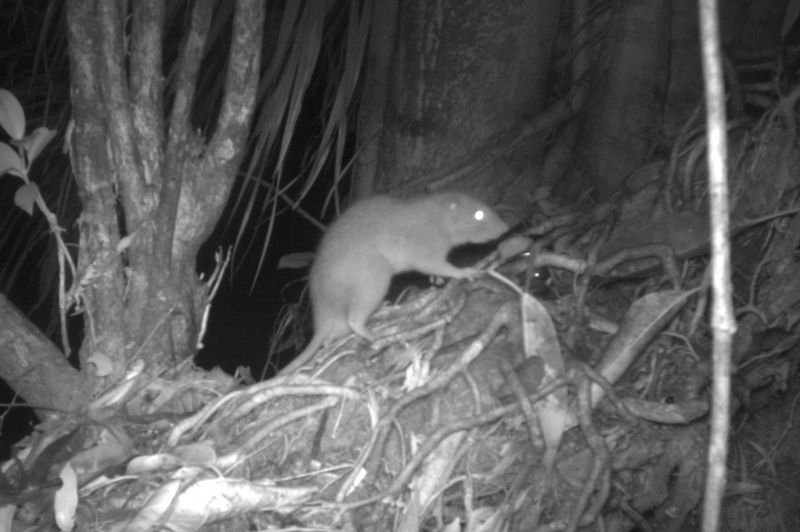
Researchers in the Solomon Islands have successfully captured the first images of the Vangunu giant rat. This mysterious rodent, which can reach lengths of up to 1.5 feet, was previously known from just one specimen that tumbled from a tree six years ago.
Employing camera traps and bait, the scientific team managed to photograph four of these rodents. These creatures, larger than your everyday rats, were seen darting about on the forest floor in the Solomon Islands, as reported by Live Science.
A study published on November 20 in the journal Ecology and Evolution has conclusively identified the rodents as Vangunu giant rats (Uromys vika). This recognition was based on their significant size, lengthy tails, and notably short ears.
In a statement, Tyrone Lavery, the lead author of the study and a lecturer specializing in native vertebrate biology at the University of Melbourne in Australia, expressed optimism about the groundbreaking achievement of capturing images of the Vangunu giant rat.
He described it as highly positive news for this species, which has been poorly understood until now.
Vangunu rats can chew through coconuts
The residents of Vangunu, an island at the heart of the Solomon Islands, have been aware for a while that their forests harbor rats of significant size, capable of chewing through coconuts.
However, scientists had been unable to confirm the existence of this species until 2017. The concrete evidence surfaced when a group of commercial loggers cut down a tree on Vangunu, leading to the unexpected discovery of a deceased giant rat that fell from it, according to Live Science.
Discovered in 2017, first photographed in 2023, extinct ca. 2028? Vangunu Giant Rat (Uromys vika). Why are we logging in Solomon Island forest reserves anyway?https://t.co/vX3iuayKk8 pic.twitter.com/kt9VG9uejx
— Wrath Of Gnon (@wrathofgnon) November 23, 2023
Several years after the initial discovery, residents from the Zaira community, responsible for overseeing the largest remaining stretch of Vangunu’s untouched forest and possessing deep insights into its ecology, collaborated with the researchers.
Together, they set up camera traps to capture long-awaited documentation of these elusive rodents in their natural habitat.
The researchers noted in their study that all images were taken during the nighttime, with the activity concentrated around midnight. To attract the giant rats, they used sesame oil, a tactic they believe played a crucial role in their success.
Previous efforts using only peanut butter had proven ineffective, drawing in non-native black rats (Rattus rattus) instead, according to researchers.
Vungunu giant rats could soon go extinct
Tyrone Lavery emphasized that the captured images are significant at this moment. The Vangunu giant rats face a looming threat of extinction, primarily due to widespread commercial logging that has severely damaged a substantial portion of the island’s forest.
This includes the specific area where the initial giant rat specimen was discovered in 2017, as outlined in the study.
In the previous year, the government of the Solomon Islands gave approval for the commercial logging of the final remnants of the forest where the already critically endangered Vangunu giant rats reside.
Lavery stated, “Logging consent has been granted at Zaira, and if it proceeds it will undoubtedly lead to extinction of the Vangunu giant rat.”
See all the latest news from Greece and the world at Greekreporter.com. Contact our newsroom to report an update or send your story, photos and videos. Follow GR on Google News and subscribe here to our daily email!



